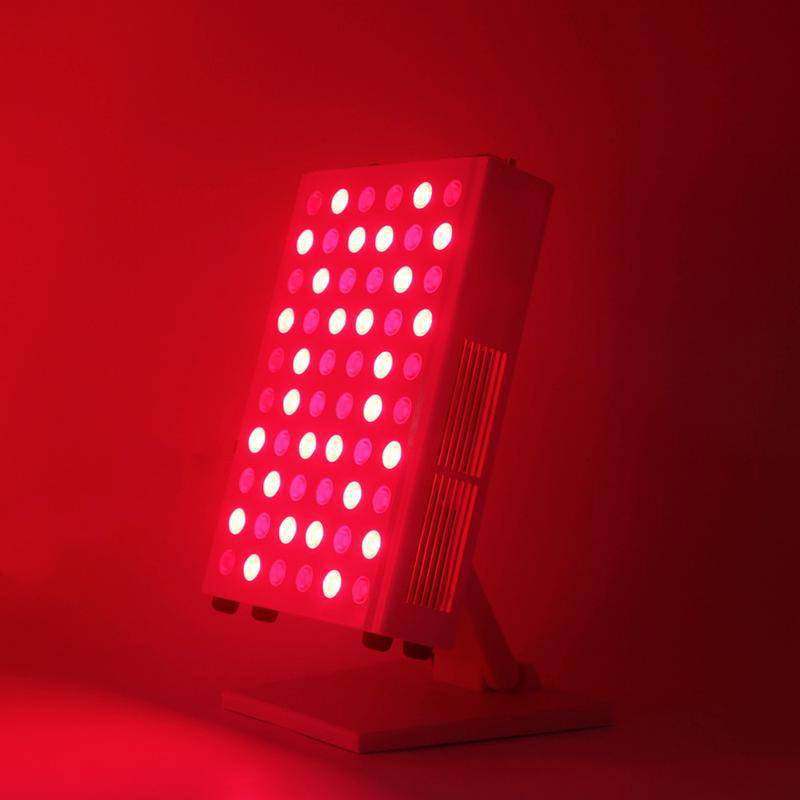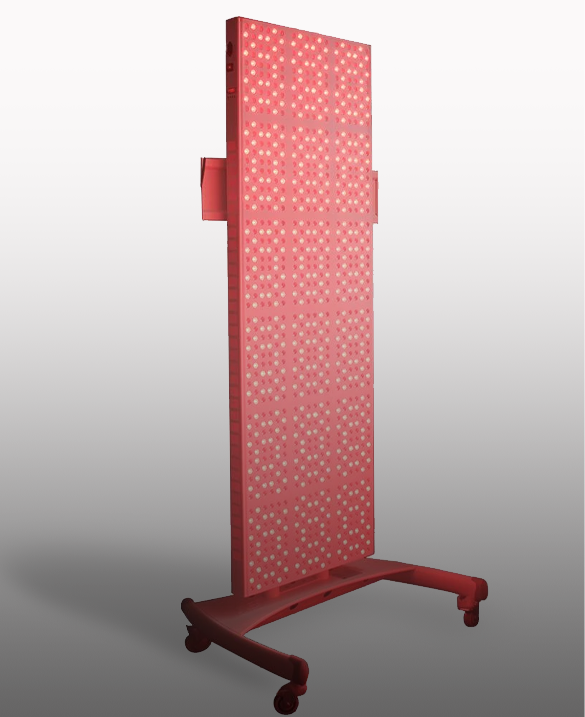ATaPa - The Better Choice
- Our devices offer optimal wavelengths of red (660nm) and near infrared (850nm) light and were 3rd party tested.
- Our devices have higher irradiance levels at 12 inches than the leading brands
- We use efficient and cost effective 3 watt LEDs to ensure the safety of you and your device
- Our devices are essentially flicker free, so you don't have to worry about any potential harmful effects.
- We use an optimal beam angle to ensure you're getting the right amount of coverage and intensity at the same time
- We're also an average of 30% less expensive than leading brands.
Read on to learn more in-depth about what distinguishes ATaPa devices.
Wavelengths
Our devices deliver wavelengths of red (660nm) and near infrared (850nm) light which are both in the natural light spectrum. These wavelengths of light have have been proven across thousands of different medical studies to enhance cellular function in a multitude of ways.
Red (660nm) lightis more surface level and more readily absorbed by skin tissue, improving things like skin health, collagen production, eye health, and even gut health.
Near infrared (850nm) light penetrates much deeper into the body and is shown to benefit brain health, nerve health, inflammation, joint pain, cellular health and much more.
Our devices have been 3rd party tested by Everfine corporation, one of the world's leading suppliers of photoelectrical (optical, electrical, opto-electronical) measurement instruments and calibration services.
To find out more on how red light therapy works click below:
Irradiance
Light power, or irradiance, or intensity is a measurement of light concentration that is measured in units of mW/cm2 (milliwatts per centimeter squared). Light power begins to decrease the further you move away from your device, and the weaker the power, the longer your treatment times.
The higher the units of mW/cm2, the higher the concentration of photons that are passing through your device.
Unfortunately, many people are paying lots of money for devices that are grossly underpowered.
Our ATaPa devices offer a higher irradiance level at 12 inches than leading brands while also saving you an average of 30% at a checkout.
Part of this is because these brands claim irradiance levels at 100mw,cm2, but only at the surface of the device. Another important factor is beam angle, which we will talk more about later. The moment you step an inch away from these devices you lose significant power.
At ATaPA, you an expect optimal power levels for optimal treatment times.
The Efficiency Myth: 3W or 5W?
At ATaPa, it is our goal to offer both effective and safe devices, and because LED technology is so new, it is often hard to understand the difference between the multitude of lights available.
There is some debate over which watt LED is more effective for light therapy, 3 or 5 watt? Some believe that a 5 watt LED is more effect because it has a greater intensity (irradiance), however, more isn't always best when it comes to light therapy.
For starters, 5 watt LEDs are more expensive, and use more energy. In addition, 5W LEDs require specialized thermal management to keep the LEDs from burning out quickly which most 5 watt LED light therapy devices do not have, not exactly what you want for an expensive device.
It is also shown that 5W LEDs are intense enough that they may damage your eyes, more like the sun, MH or HPS lights. The recommended distance for safe 5 watt LED use for eye health is up to4 feet, not very effective when it comes to obtaining a benefit from your red light therapy device. 5 watt LEDs are most commonly reserved for grow lights and have not had enough sufficient testing for human safety.
3 watt LEDs require no extra thermal protection, safe for eye health, are cost effective and still put out enough power to be both effective and safe at 100+mw/cm2. That's the ATaPa way.


Flicker rate
Rate of LED flicker is becoming another important topic in terms of LED safety and the physiological effects from light therapy. LED lights flicker because with alternating current the LEDs are turning on and shutting off many times per second as the current changes directions.
Some believe that the flicker ratio can cause biological stress such as eye strain and headaches. The truth is that most cheap household lighting has potentially harmful rates of flicker.
BEWARE: The leading brand of red light therapy devices is known to have a harmful flicker rate.
Our customers are pleased to know that our rate of flicker is 40 kHz. This means our devices have virtually ZERO flicker rate at all. So you don't have to worry about a thing and can enjoy all the benefits associated with red light therapy.
Beam Angle: Why it Matters
Beam angle is another important factor when it comes to purchasing your red light therapy device. Standard household LEDs are most often equipped with an 120 degree beam angle, while more intense LEDs like lasers can have beam angles that are less than 1 degree!
Beam angle matters because COVERAGE is an important aspect of what makes an effective red light therapy device, the more coverage the better.
When purchasing your first device, it's important to consider the beam angle becauseif your beam angle is too wide, your LED loses its intensity and thus its benefit. If your beam angle is too narrow, you're most likely not getting enough coverage and need to back up from your device.
The most popular brand for red light therapy uses a 60 degree beam angle which is shown to create a major decrease in irradiance, especially past one inch of their device. Not exactly an efficient device considering most studies have been based on lasers and beam angles that were 30 degrees and below.
The LEDs on our devices come equipped with a happy medium of a 30 degree angle to ensure you're getting the right intensity and coverage at the same time.


